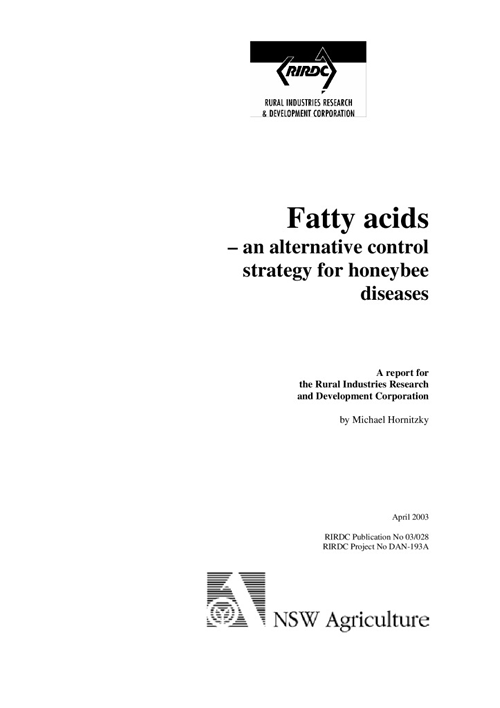National Honey Bee Breeding Strategy 2024-2029
In all livestock industries, genetic selection has been used to increase animal productivity and, by extension, enterprise profitability. The Australian honey bee industry is no...
 HONEY BEE & POLLINATION
HONEY BEE & POLLINATION 
19 pages
Published: 1 Apr 2003
Author(s): Hornitzky, Michael
Download report PDF
DownloadPurchase a hard copy - AUD $45.00
There are two major bacterial diseases of honeybees in Australia; European foulbrood (EFB) caused by Melissococcus pluton and American foulbrood (AFB) caused by Paenibacillus larvae subsp. larvae.
EFB causes significant economic loss to the beekeeping industry in Australia and around the world. In Australia the impact of EFB on the bee farming industry necessitated the introduction of hive treatment in Australia in 1977 with the antibiotic oxytetracyline hydrochloride (OTC). In a recent RIRDC funded study [DAN136A; “Oxytetracycline sensitivity, diversity and study of M. pluton (European foulbrood)”] 104-M. pluton isolates from New South Wales, Victoria, Queensland, South Australia and Victoria were all demonstrated to be sensitive to low concentrations of OTC. However, recent advances in the detection of very low concentrations of OTC have resulted in the detection of OTC in honey following hive treatment with this antibiotic when the honey was tested after the recommended withholding period. These findings may have a serious impact on the marketing of honey as it is considered to be a natural product, and as such, an unadulterated food. Alterative methods for the control of EFB are needed if problems with residues are to be eliminated.